Imagine: morning, you step onto the terrace with a cup of aromatic coffee, and before you is a perfectly even, emerald-green carpet, on which sunlight plays, and dew drops sparkle like precious stones. This is not a picture from a glossy magazine, this is a completely achievable reality for your garden. A cottage lawn is not just evenly mowed grass, it is a true work of art, a central element of landscape design that can transform any space, give it elegance, and become the calling card of your plot. I myself am crazy about this beauty and am ready to share all the secrets on how to achieve such an effect, even if you have never dealt with lawns before.
What is a Cottage Lawn and Why is it Needed in the Garden?
So, let’s figure out what a cottage lawn is. Translated from French, ‘parterre’ means ‘a platform in front of something’. Historically, a cottage lawn is a low-mown, dense, uniform in color and texture grassy area located in the foreground of the garden, in front of the house, the main entrance, or important architectural elements. Its main task is to serve as a background, to emphasize the beauty of surrounding plants, sculptures, fountains, creating a sense of solemnity, order, and completeness of the composition.
What is its charm for the modern summer resident? Firstly, it’s aesthetics. A perfectly even, bright green lawn looks incredibly noble and well-groomed. It visually expands the space, makes the plot neater and brighter. Secondly, functionality. A cottage lawn is a wonderful place for relaxation, games with children, and family picnics. It creates a sense of spaciousness and freedom. Thirdly, it is the basis for further decoration. Against the background of such a lawn, any garden compositions, whether they are flower beds, shrubs, or small architectural forms, will look particularly advantageous. It’s like a canvas on which you can create your garden picture.
Many people think that a cottage lawn is very difficult and expensive. Believe my experience, this is a myth! With the right approach and regular care, anyone can create and maintain such beauty. The main thing is to know the nuances and not be afraid of work. It’s a kind of meditative activity, the result of which pleases the eye for many years.
Types of Cottage Lawns: From Classic to Modern
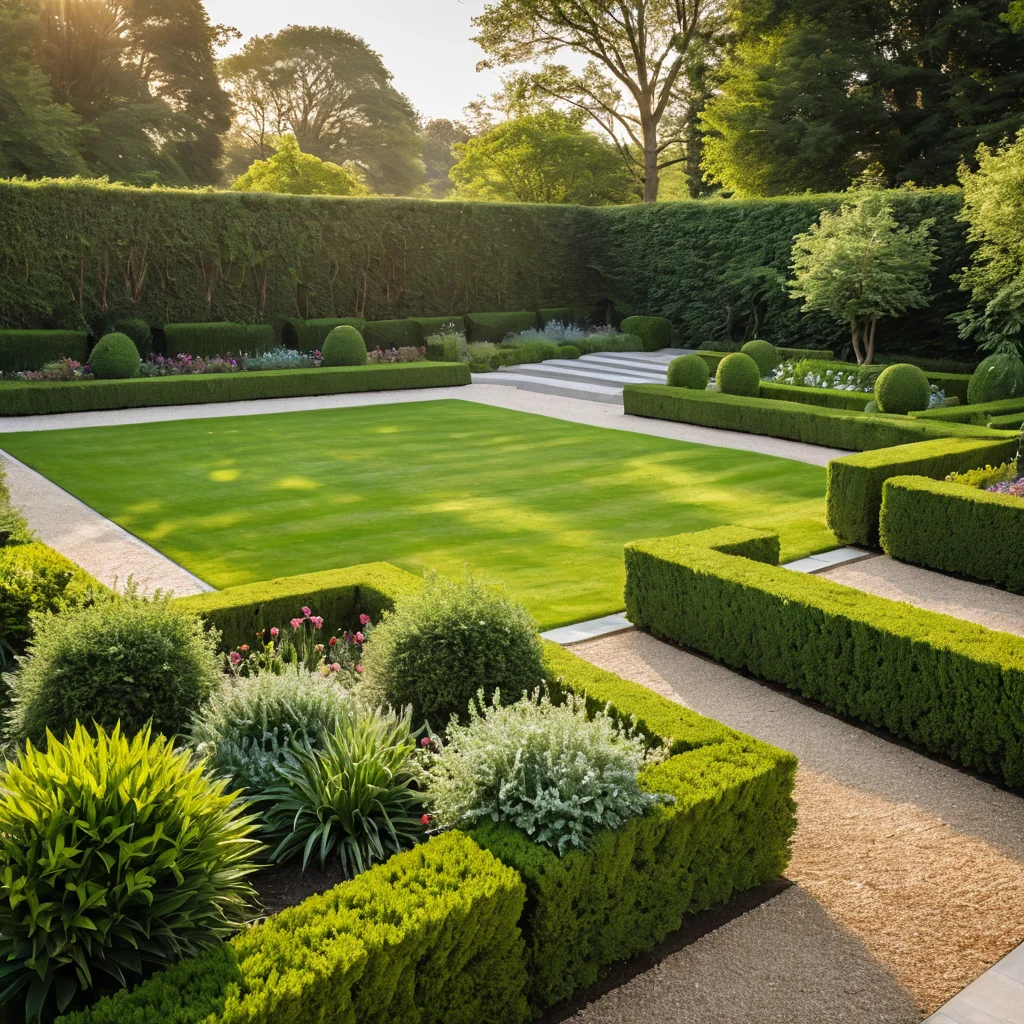
When we talk about a cottage lawn, we most often imagine the classic version – bright green, dense, like velvet. But in fact, there are several directions that can fit this definition, depending on your preferences and garden style:
- English Cottage Lawn (Royal lawn): This is the standard of a perfect lawn. Maximally dense, uniform, bright green, with an even grass height. The best, carefully selected grass mixtures are used for it. It requires the most meticulous care: frequent mowing, root-zone watering, regular fertilization, and aeration. This lawn is a symbol of prestige and aristocracy.
- Moorish Lawn (Flower Carpet): This is no longer a classic in the strict sense of the word, but a very popular option for creating picturesque meadows. It is a mixture of low-growing grasses (e.g., bluegrass, fescue) with the addition of annual and perennial flowers. Such a lawn is not mowed as often as an English one, and it looks more natural and free. It is ideal for creating a romantic corner in the garden.
- Meadow Lawn: This is the easiest option to care for, imitating a natural meadow. It is dominated by cereal grasses that are resistant to various conditions, but it can also contain a certain proportion of wildflowers. It is mowed rarely, usually 1-2 times per season. It is perfect for large plots where a natural, wild landscape needs to be created.
- Sports Lawn: Although this is not exactly a cottage lawn, it is worth mentioning. It is very dense, wear-resistant, and can withstand intense loads. It is used for playgrounds and sports areas. It requires special care and regular feeding.
- Decorative Lawn: This term combines various types of lawns, the main goal of which is aesthetics. A cottage lawn is, in essence, one of the varieties of decorative lawn. It can also include lawns with added flowering plants, low-growing grasses that create a picturesque pattern.
To create a true cottage lawn that will delight with its evenness and color, the English cottage lawn is most often chosen. But you can always adapt ideas, combining elements of different types to create your unique corner. For example, you can plant flowers around the central cottage lawn or create a more free meadow.
Choosing the Ideal Seeds for a Cottage Lawn: Grasses and Their Properties
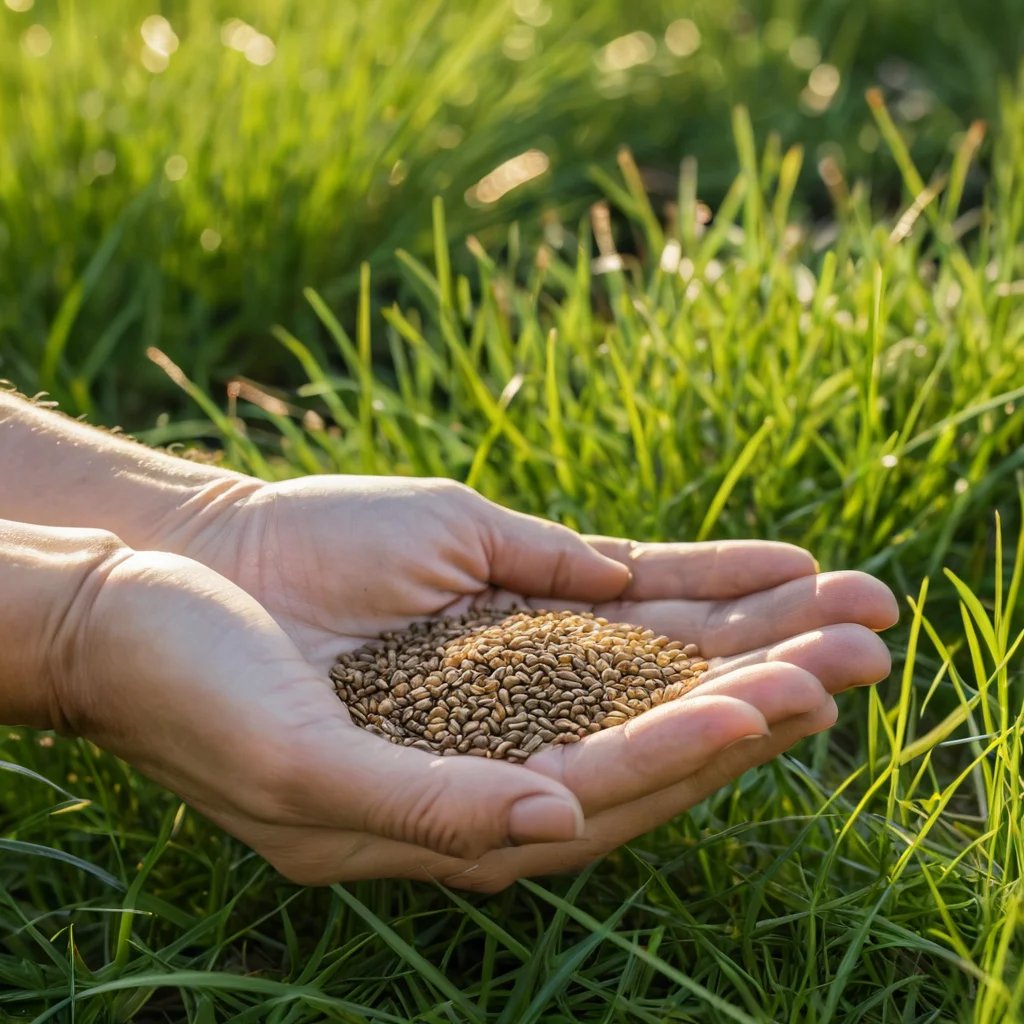
Choosing the right seeds is perhaps the most important step towards creating the perfect cottage lawn. Its appearance, resistance to external factors, and durability directly depend on this. You can’t just grab the first bag you see labeled ‘lawn grass’. You need to understand which cereals are right for you.
For a cottage lawn, which should be dense, bright green, and beautiful, mixtures based on the following grasses are usually used:
- Kentucky Bluegrass (Poa pratensis): This is the king of cottage lawns! It has a very dense, thick turf, forms a powerful root system that holds the soil and makes the lawn resistant to trampling. Bluegrass tolerates low mowing well, has a rich green color. However, it develops quite slowly after sowing; you need to be patient for the first few months. It also dislikes drought and can suffer from heat if it doesn’t receive enough moisture.
- Red Fescue (Festuca rubra): This grass perfectly complements bluegrass. It is very shade-tolerant (which is important for areas under trees), drought-tolerant, and grows well on various soil types. Red fescue has thin, narrow leaves that give the lawn softness and velvety texture. There are several subspecies of fescue, for example, ‘Communis’ – the most common, and ‘Rupicola’ – more drought-tolerant.
- Perennial Ryegrass (Lolium perenne): This is the fastest-growing grass in the mixture. It germinates instantly, recovers quickly after damage, and gives the lawn a bright green color. However, ryegrass does not tolerate low mowing, drought, and low temperatures very well. It is usually added to mixtures in small quantities (up to 10-20%) for a quick effect and recovery.
- Creeping Bentgrass (Agrostis stolonifera): This grass forms a very dense, low carpet that looks great. It grows well in moist conditions and in the sun. But bentgrass requires very careful maintenance, regular mowing, and can be susceptible to fungal diseases.
What should the ideal mixture for a cottage lawn be like?
I would advise paying attention to ready-made mixtures labeled ‘Cottage Lawn’ or ‘Elite Lawn’. They usually contain:
- 40-50% Kentucky Bluegrass
- 30-40% Red Fescue
- 10-20% Perennial Ryegrass (for a quick effect)
Important points when choosing seeds:
- Expiration Date: Make sure the seeds are fresh. Old seeds may have low germination rates.
- Purity: Pay attention to the percentage of seed purity. The higher it is, the better.
- Purpose: Do not buy universal mixtures for all occasions. Cottage lawns require special varieties.
- Manufacturer: Prefer well-known seed manufacturers.
Do not skimp on seeds! Quality seeds are the key to your success and the future beauty of your lawn.
Preparing the Site for a Cottage Lawn: Drainage, Soil, and Planning
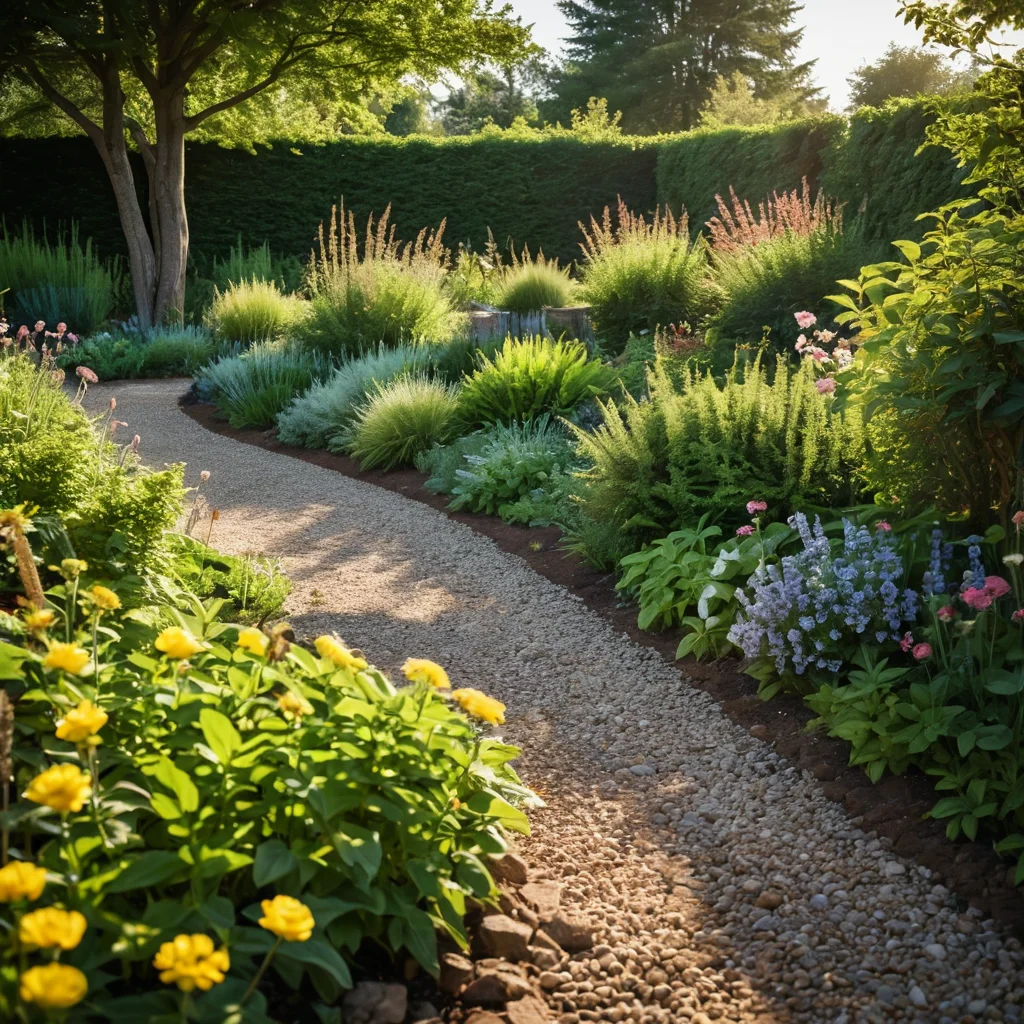
Creating a perfect cottage lawn begins not with seeds, but with thorough site preparation. This is a stage that cannot be skipped or done “hastily.” The evenness, health, and durability of your lawn will depend on how well you prepare the soil.
1. Site Clearing
First of all, you need to completely clear the area of everything unnecessary:
- Weeds: Remove all weeds with their roots. If the area is heavily overgrown, you may need to use herbicides (it’s best to do this in advance, a few weeks before the main work).
- Stones, construction debris, tree roots: All of this must be carefully dug up and removed.
- Old grass: If there was already grass on the site of the future lawn, it needs to be removed along with the top layer of sod.
2. Planning and Leveling
Now is the time to give the site the desired shape and perfectly level the surface. This stage requires accuracy and patience.
- Creating a slope: The lawn should not stand in water. A slight slope (1-2 cm per meter) towards drainage ditches or other low-lying areas must be provided.
- Leveling: Use a rake and a long leveling board (straightedge) to level the surface. The goal is to achieve a perfectly flat surface, without pits or bumps. Even minor unevenness will be noticeable on a cottage lawn.
- Compaction: After leveling, the surface needs to be lightly compacted. You can use a special roller or simply walk across the area, stepping from foot to foot. After compaction, small pits will appear on the surface – they need to be filled with soil again and leveled.
3. Drainage
Good drainage is the key to a healthy root system. This is especially important for areas with heavy clay soil or high groundwater levels.
- Surface drainage: Creating a slope, which we discussed above, is already part of surface drainage. You can also dig shallow (15-20 cm) ditches filled with gravel or crushed stone, which will divert excess water.
- Deep drainage: For very wet areas, it may be necessary to lay drainage pipes at a depth of 40-60 cm. Geotextile is laid at the bottom of the trench, then a layer of gravel, a drainage pipe, more gravel, and geotextile.
4. Soil Preparation
Quality soil is nutrition and the basis for grass growth.
- Soil type: Cottage lawns grow best on loamy or sandy loam soils, which retain moisture well but also allow air to pass through.
- Soil improvement: If you have heavy clay soil, add sand and peat. If the soil is too sandy, add humus, compost, or clay.
- Working depth: The soil should be dug to the depth of a shovel blade (20-25 cm).
- Fertilizer application: Before sowing, apply complex mineral fertilizers for lawns (with a predominance of phosphorus and potassium for root system development). Do not use fresh manure – it can “burn” the roots of young grass.
- Final leveling: After applying fertilizers, level the surface thoroughly again with a rake, breaking up all clumps.
Important tip: Let the area “rest” for a few days before sowing so that the soil settles slightly. If unevenness appears again, they will need to be corrected.
Step-by-Step Guide: How to Sow a Cottage Lawn Yourself

So, the site preparation is complete, the soil is ready to receive seeds. Now it’s time to move on to sowing itself. This process does not require special skills, the main thing is to act carefully and evenly.
1. Choosing the Sowing Time
The best time for sowing a cottage lawn is:
- Spring: from late April to early June, when the threat of frost has passed and the soil has warmed up sufficiently.
- Autumn: from late August to mid-September. Autumn sowing is preferable, as the grass has time to root before winter and tolerates summer drought better.
Avoid sowing in hot, dry, and windy weather. The ideal conditions are a cloudy, windless day.
2. Sowing Rate
The sowing rate for a cottage lawn is usually 30-40 grams per square meter. Always check the exact rate on the seed packaging, as it may vary slightly depending on the mixture composition.
3. Sowing Process
There are two main sowing methods:
- Manual Sowing:
- Divide the area into small squares (e.g., 2×2 meters).
- Measure out the seeds for each square.
- Spread the first half of the seeds evenly over the surface of the plot lengthwise, trying to cover the entire area.
- Spread the second half of the seeds crosswise, perpendicular to the first direction. This will help achieve the most even sowing.
- Mechanized Sowing (seeder):
- Using a special lawn seeder allows for even more uniform seed distribution.
- Fill the seeder hopper with seeds.
- Walk across the area according to the seeder’s instructions (usually moving back and forth to cover the entire area evenly).
My advice: If you have a small area, manual sowing is perfectly fine. For large areas, it’s better to use a seeder – it will save time and effort, and most importantly, ensure uniformity.
4. Incorporating Seeds into the Soil
After sowing, the seeds need to be gently incorporated into the soil so that they don’t remain on the surface and aren’t blown away by the wind or eaten by birds.
- Rake: Use a rake with fine tines to lightly “comb” the top layer of soil (to a depth of 0.5-1 cm). This will help to lightly cover the seeds with soil.
- Roller: After this, it is recommended to lightly roll the area with a garden roller. This will ensure good contact between the seeds and the soil and accelerate germination.
5. First Watering
After incorporating the seeds, a first, very abundant watering should be done.
- Watering regime: Use a sprinkler with fine mist. Water in such a way as not to wash away the sown seeds.
- Frequency: For the first 2-3 weeks after sowing, the soil should be constantly moist, but not wet. Water frequently, in small portions, especially in dry weather.
Patience is your main helper! The first sprouts will appear in about 7-14 days, depending on temperature and humidity. The lawn will reach full development only after 2-3 years.
First Steps After Sowing: Caring for a Young Cottage Lawn
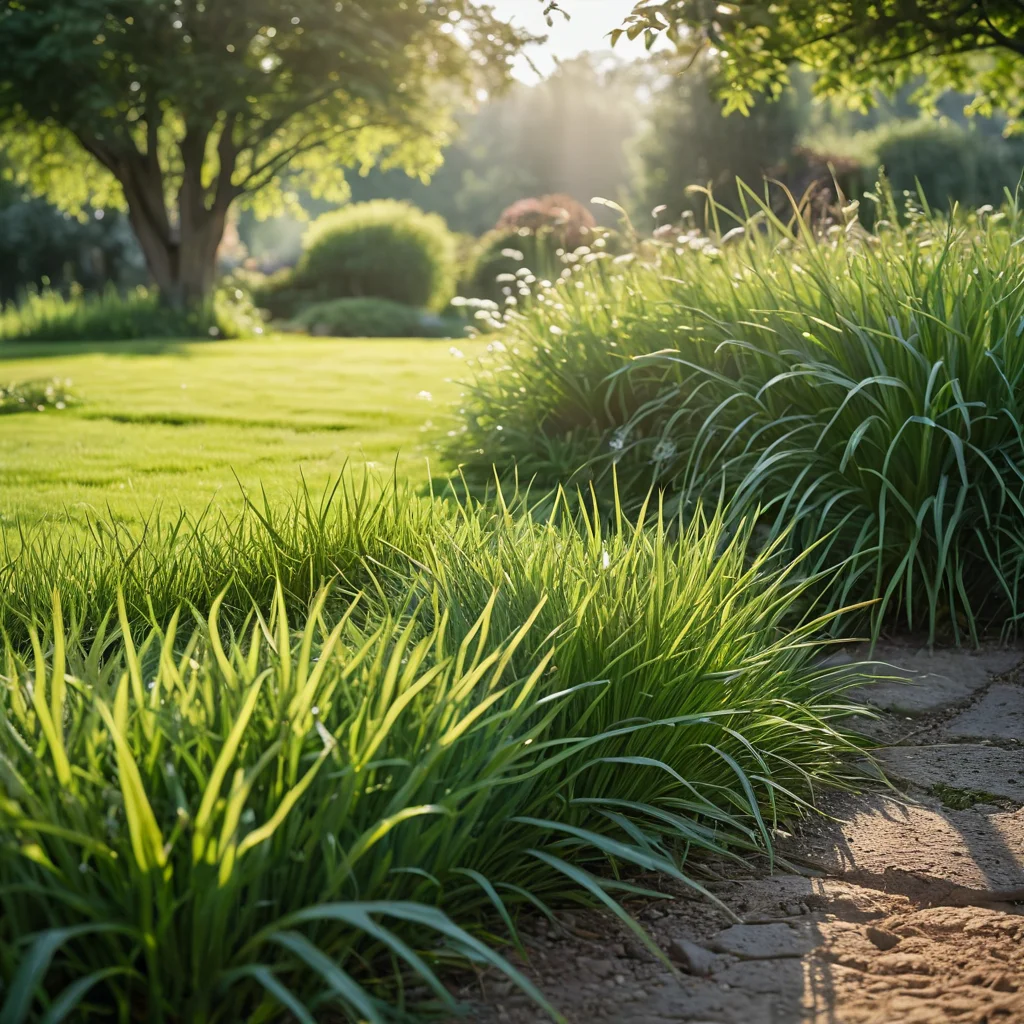
The first weeks and months after sowing are the most critical period. The further development and health of your young lawn depend on how you care for it. Remember that young grass is very delicate and requires gentle handling.
1. Watering
Continue to keep the soil moist. If you see that the top layer is drying out, be sure to water. The frequency of watering will depend on the weather:
- In hot and dry weather, daily watering may be required.
- In cool and rainy weather, watering can be reduced.
The main rule: it is better to water more often, but in small portions, so as not to over-moisten the soil and not create waterlogging.
2. First Mowing
You can start the first mowing when the grass height reaches 8-10 cm. It is very important to do it correctly:
- Sharp blades: Use only well-sharpened mower blades. Dull blades will tear the grass, leading to yellowing and diseases.
- Mowing height: Cut no more than 1/3 of the grass height at a time. That is, if the grass is 10 cm, mow to 7 cm.
- Frequency: For the first few mowings, it’s better to mow more often, but cut less, so that the grass strengthens.
Important: Do not mow wet grass! This can lead to plant damage and disease spread.
3. Weed Control
Weeds will definitely appear on a young lawn. Don’t let them grow!
- Manual weeding: Small weeds are best removed by hand, carefully pulling them out with their roots.
- Herbicides: If there are too many weeds, you can use special lawn herbicides. But be careful: use them only after the grass has strengthened (usually 1-2 months after sowing) and strictly follow the instructions to avoid damaging the young cereals.
4. Aeration
Aeration is soil ventilation. It is necessary to saturate the root system with oxygen and improve the penetration of water and nutrients.
- When to perform: The first aeration can be done 1-1.5 months after sowing.
- Tools: Use garden forks or a special aerator.
- Process: Pierce the soil to a depth of 5-7 cm at intervals of 10-15 cm.
5. Fertilization
Young lawn needs nutrition for active growth.
- Fertilizers: 1-1.5 months after sowing, apply the first feeding with a special complex fertilizer for young lawns. They usually contain more nitrogen to stimulate the growth of green mass.
- Frequency: Fertilize the lawn regularly, according to the fertilizer manufacturer’s instructions (usually every 3-4 weeks during the growing season).
Remember: Caring for a young lawn requires attention and care. Don’t forget to water, mow, and fertilize it, and it will reward you with its beauty!
Daily Care for an Adult Cottage Lawn: Mowing, Watering, and Fertilizing
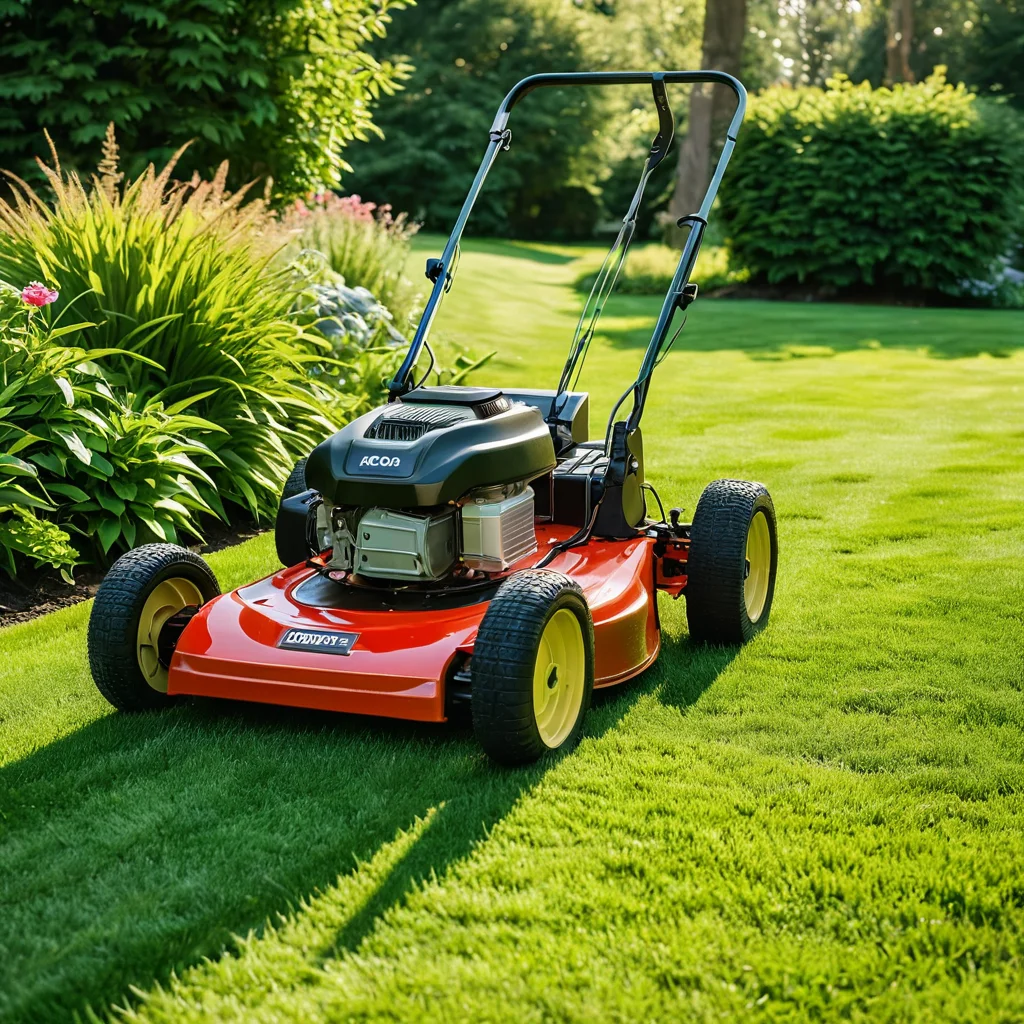
When your cottage lawn has strengthened (usually 1-2 years after sowing), it will require regular, but more familiar care. The goal is to maintain its density, rich color, and perfect structure.
1. Mowing
Mowing is the main tool for shaping a cottage lawn. It is characterized by a low grass height.
- Mowing height: For a cottage lawn, the ideal height is 3-4 cm. In hot summers, you can raise the height to 5 cm so that the grass suffers less from drought.
- Frequency: During the active growth period (spring-summer), you will have to mow 1-2 times a week. In autumn, the frequency of mowing can be reduced.
- Mowing technique: Always use sharp blades. Alternate mowing direction (lengthwise, crosswise, diagonally) so that the grass grows vertically and does not get flattened in one direction.
- Mulching: Modern lawnmowers have a mulching function (shredding grass and returning it to the lawn as fertilizer). This is a great way to fertilize the lawn, but it can only be used with regular mowing when the grass is not too long.
2. Watering
Regular and proper watering is the key to a healthy and beautiful lawn color.
- Frequency: In hot weather, water the lawn regularly, preferably in the morning or evening. Surface watering, where water only moistens the top layer, is harmful. Water abundantly so that water penetrates to a depth of 7-10 cm, stimulating the growth of a deep root system.
- Signs of moisture deficiency: Yellowing of grass, loss of elasticity, grayish tint.
- Excess moisture: Can lead to the development of fungal diseases and root rot.
- Irrigation systems: Automatic irrigation systems are convenient for large areas.
3. Fertilization
Regular feeding is a prerequisite for maintaining the perfect appearance of a cottage lawn.
- Types of fertilizers: Use special complex fertilizers for lawns. In spring, fertilizers with a high nitrogen content (N) are preferred for the growth of green mass. In summer – balanced fertilizers. In autumn – with increased potassium (K) and phosphorus (P) content to strengthen the root system and prepare for winter.
- Frequency: Usually, feeding is done 4-5 times per season: in early spring, before summer, mid-summer, late summer, and autumn.
- Application method: Fertilizers are evenly scattered on dry grass, and then the lawn is watered abundantly.
4. Additional Care
In addition to the main procedures, do not forget about the additional ones:
- Aeration: Perform 1-2 times a year (spring and autumn) to improve air access to the roots.
- Scarification (raking): Removal of moss, dry grass, and thatch from the lawn surface. Performed in spring and autumn using a special tool (scarifier).
- Pest and disease control: Regularly inspect the lawn. If spots, yellowing, or signs of pests appear, take immediate action using appropriate products.
- Reseeding: If bare patches have appeared on the lawn, they can be reseeded in spring or autumn.
Regular, but not excessive, care will allow your cottage lawn to remain flawless for many years to come.
Typical Mistakes When Creating and Caring for a Cottage Lawn: How to Avoid Them
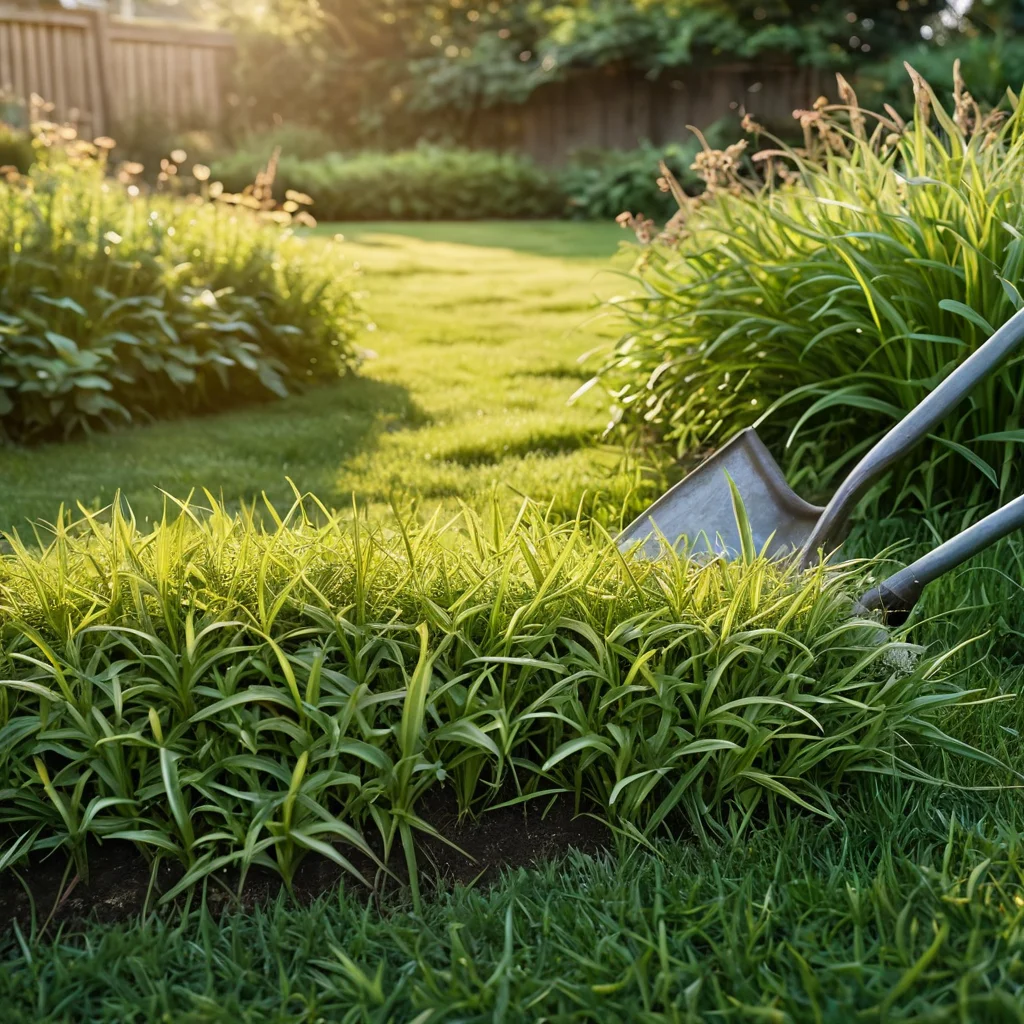
Creating a cottage lawn is a process that requires attention to detail. And, as in any endeavor, there are pitfalls. I have compiled the most common mistakes that gardeners make and will tell you how to avoid them so that your efforts are not in vain.
1. Mistakes in Site Preparation
- Insufficient weed removal: The most common mistake. If you don’t remove all weed roots, they will definitely grow through your perfect lawn, spoiling its appearance. Solution: Thoroughly clear the area, and if necessary, carry out herbicide treatment in advance.
- Poor leveling: Unevenness, pits, and bumps not only spoil the appearance but can also lead to waterlogging, which is detrimental to grass. Solution: Don’t spare time on leveling. Check the flatness with a long leveling board.
- Lack of drainage: Heavy, clay soils without drainage are a direct path to lawn death. Solution: Be sure to provide a slope or drainage systems, especially in problem areas.
- Using unsuitable soil: Soil that is too acidic, alkaline, or poor will not allow the grass to develop normally. Solution: Before sowing, analyze the soil and, if necessary, add the required components (sand, peat, compost, lime).
2. Mistakes During Sowing
- Incorrect sowing rate: Too sparse sowing will lead to bare patches and weed growth. Too dense – the grass will be weak and sickly. Solution: Strictly adhere to the sowing rate indicated on the seed packaging (usually 30-40 g/m²).
- Uneven sowing: This will lead to an uneven lawn – grass will be denser in some places and sparser in others. Solution: Use the method of sowing in two directions (lengthwise and crosswise) or a seeder.
- Sowing in unsuitable weather: Sowing in windy, dry, or hot weather reduces seed germination. Solution: Choose a cloudy, windless day.
3. Mistakes in Caring for a Young Lawn
- Drying out or overwatering: Young grass is very sensitive to lack and excess of moisture. Solution: Keep the soil constantly moist, but not wet.
- Too early or incorrect first mowing: Mowing too long grass or cutting more than 1/3 of its height damages young cereals. Solution: Wait until the height is 8-10 cm and cut no more than 1/3. Use sharp blades.
- Ignoring weeds: Young weeds quickly suppress delicate lawn grass. Solution: Weed regularly or use safe herbicides.
4. Mistakes in Caring for an Adult Lawn
- Mowing too low: Constant mowing below 3-4 cm weakens the lawn, making it vulnerable to drought and diseases. Solution: Maintain an optimal height of 3-5 cm.
- Infrequent or incorrect watering: Surface watering stimulates the growth of a shallow root system. Solution: Water abundantly, but less often, so that water penetrates deeply.
- Lack of fertilizer: A lawn deprived of nutrients loses its bright color and density. Solution: Regularly fertilize the lawn with special fertilizers.
- Ignoring aeration and scarification: Compacted soil hinders the access of air and water to the roots. Solution: Perform aeration and scarification 1-2 times a year.
By avoiding these common mistakes, you can create a truly magnificent cottage lawn that will delight you with its beauty for many years to come. The main thing is patience, attention, and a little love for your garden!
